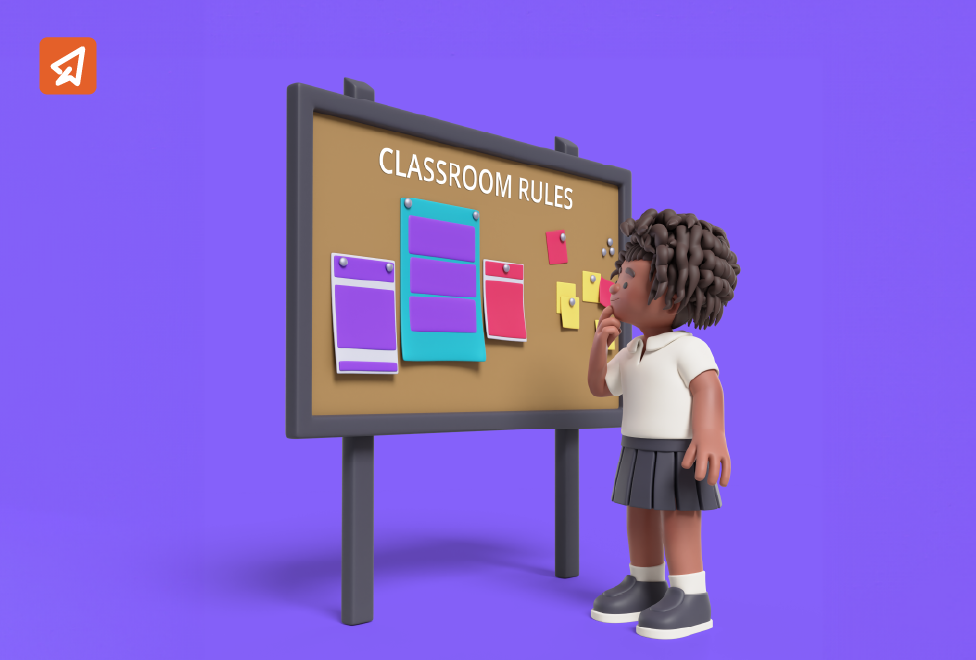What is Activity-Based Learning and Its Importance?

Activity-based learning is revolutionising educational approaches by emphasising the role of interactive and practical experiences in the learning process. Unlike traditional methods that often rely on passive absorption of information, the activity-based learning method encourages students to engage directly with the material through hands-on activities and real-world applications. In this blog, we’ll explore the characteristics of this method, along with its benefits and types.
What is Activity-Based Learning?
Activity-based learning is a teaching module where teachers mainly focus on delivering the subject matter through activities to make learning more engaging and interesting. In this flipped classroom learning methodology, the student is kept as the centre of the learning process, and the teacher is only acting as the facilitator by introducing and guiding them through the learning activities. This way, the students learn at their own pace.
Unlike traditional teaching methods, activity-based learning helps students engage in the learning process rather than just being passive recipients. They can engage, experiment, explore, and express at their own pace, making education a fun activity.
Characteristics of Activity-Based Learning
Activity-based learning offers a unique and engaging approach to education, standing out from traditional teaching methods. The defining characteristic of the activity-based learning method is its focus on using interactive, child-friendly learning tools that promote self-directed learning. This approach allows children to progress at their own pace, fostering a deeper understanding of the material.
-
Child-Centred Approach
The activity-based curriculum emphasises the interaction between children and their environment, guiding them to explore, question, and discover as they work through tasks. This hands-on approach allows children to learn through active engagement with the world around them.
-
Social Development Focus
The method is rooted in the idea that children develop logical thinking not inherently but through social interactions and practical experiences. Activity-based learning encourages collaboration and group activities, helping children understand concepts through shared experiences.
-
Holistic Learning Experience
In the activity-based curriculum, education is not just about absorbing information but involves a dynamic process where both teaching and learning are seen as activities. This holistic approach ensures that learning is interconnected with practical experiences, making it more meaningful.
-
Integration of Knowledge and Skills
Unlike traditional methods that often separate theory and practice, this method weaves them together. Skills and knowledge complement each other, offering a balanced learning experience where both are equally valued and reinforced.
-
Learning Through Experience
The activity-based learning method focuses on experiential learning, where knowledge is acquired through doing. Students gain insights and understanding by participating in activities rather than just receiving information passively.
-
Empowerment and Ownership
This learning method empowers children by giving them a sense of control over their education. As active participants in their learning journey, they develop responsibility and a stronger connection to what they are learning, which leads to greater motivation and retention.
This method of learning supports the natural curiosity and creativity of children, making it an effective and engaging approach to education.
Benefits of Activity-Based Learning
There are several advantages of activity-based learning, as it gives children more freedom to learn at their own pace. Below are some of its major benefits:
-
Encourages Self-Expression
Activity-based learning allows students to express themselves creatively, giving them the freedom to approach tasks in their own unique ways. It encourages independent problem-solving, enabling learners to explore concepts on their own terms. Instead of just writing things down, students can demonstrate what they’ve understood through hands-on experiences.
-
Makes Learning an Interactive Experience
Online classes can often feel repetitive, but incorporating activity-based learning can make them more engaging. This approach encourages students to connect with one another, fostering interaction. It also promotes gathering knowledge through personal research and hands-on experiences, making learning more dynamic and personal.
-
Creates Independence in Students
Activity-based learning focuses on a self-driven learning process where students actively engage in hands-on experiments, discovering lessons through trial and error. This method fosters a sense of responsibility in students for their own work while also allowing them to feel acknowledged for their efforts. The goal is to nurture curiosity and independent thinking from an early age.
-
Supports Overall Development
The activity-based learning method promotes the development of social skills and teamwork in children. It enhances their foundational understanding while encouraging them to gain knowledge beyond the classroom, helping them connect with real-world experiences.
-
Enhances Competencies
Activity-based learning encourages children to tap into various skills such as creativity, critical thinking, problem-solving, decision-making, and adaptability. By actively engaging with different materials and tasks, they learn to figure things out on their own. This hands-on approach helps them build a wide range of competencies and essential life skills.
Types of Activity-Based Learning
Activity-based learning methods come in several different types, each having distinguished characteristics of their own. Here are some of the main types:
-
Project-Based Learning
In the project-based learning form of activity-based learning, students engage in long-term projects that can stretch over weeks or even months. From drafting a business proposal to organising a community service initiative, they are fully immersed in the process from start to finish.
-
Problem-Based Learning
Problem-based learning helps students tackle real-world challenges, fostering critical thinking skills. They frequently draw on knowledge from various disciplines to devise solutions.
-
Case-Based Learning
This type of activity-based learning method involves students examining real or hypothetical cases to develop solutions. It’s particularly popular in the fields of business and law.
-
Game-Based Learning
Who says learning has to be dull? When educational material is transformed into games, students become more involved and might not even notice they’re absorbing knowledge.
-
Experiential Learning
Experiential learning is a type of activity-based learning curriculum method that focuses on hands-on learning experiences, such as field trips, internships, or labs.
Bottom Line
Integrating games and engaging activities into the curriculum certainly adds a layer of excitement, but it also highlights the crucial role of educators. This dynamic approach demands educators who are not only skilled but also passionate about crafting inventive activities for every subject. These activities should encourage students to explore concepts more thoroughly. Moreover, it’s essential to maintain a balance between structured learning and interactive activities to ensure that students are well-prepared for both exams and real-life challenges.
Transform your school\'s teaching approach with Extramarks!
Our platform offers comprehensive activity-based learning solutions that engage students through interactive lessons, quizzes, and real-time assessments. With tools designed for educators, you can easily track student progress, facilitate collaboration, and enhance classroom experiences. Join Extramarks today and enhance student learning outcomes!
Learn MoreLast Updated on February 14, 2025
Reviewed by

Prachi Singh | VP - Academics
Prachi Singh is a highly accomplished educationist with over 16 years of experience in the EdTech industry. Currently, she plays a pivotal role at Extramarks, leading content strategy and curriculum development initiatives that shape the future of education...read more.










